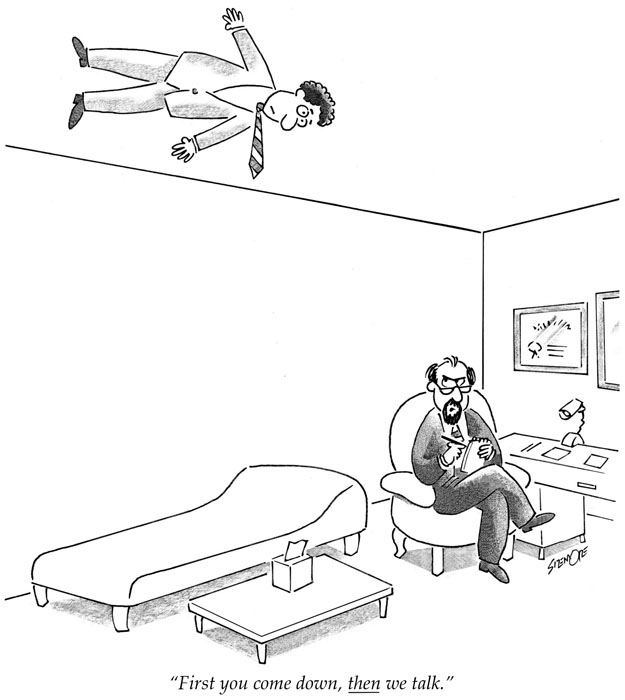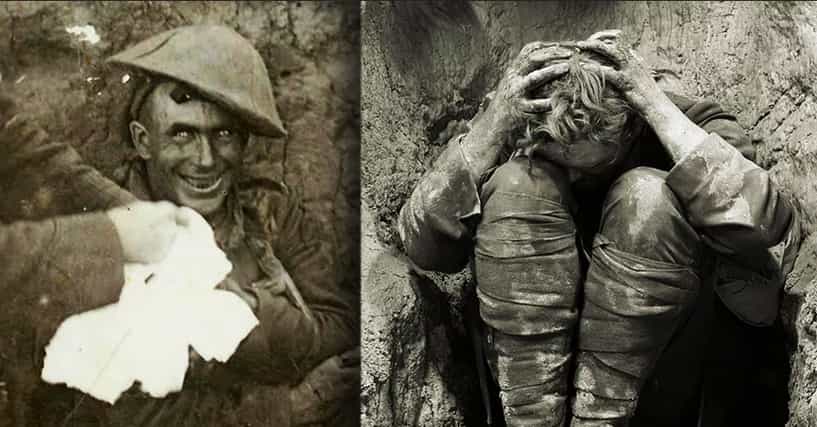Research Notes: Body Keeps the Score Part 4
The Imprint of Trauma
Lawrence Langer's book, Holocaust Testimonies: Ruins of Memory (1991) contains this incredibly poignant quote about the brain on trauma:
" Who can find a proper grave for such damaged mosaics of the mind, where they may rest in pieces? Life goes on, but in two temporal directions at once, the future unable to escape the grip of a memory laden with grief"Repressed Memory
For many, memories of trauma only resurface years later when triggered by a specific set of circumstances or during the course of Therapy.
- The time between incident and the resurfacing is not an issue during the course of therapy
- The Goal of the Therapist is not to determine exactly what happened to a person "but to help them tolerate the sensations, emotions and reactions they experience without being constantly hijacked by them" p. 176
- It DOES become a big problem, however, during litigation
- Culpability becomes the primary focus
People often lose complete memory of a traumatizing event only to "regain access" to those fragments of trauma much later on.
Trials have had both lawyers and psychologists claiming that repressed memory is based on junk science - It is a debate that is constant even today
Normal Memory vs Traumatic Memory
At their most basic, normal memories = "stories we tell to convey our personal take on our experience
- They are NOT reflections of reality: They are subjective stories
Study done asking Vets of WWII what they had gone through both in 1945 and in 1989
- Non-traumatized veterans had stories that were much different and changed over time
- Traumatized veterans did NOT modify their stories at all. Their memories were, essentially, in tact
Level of Arousal during an event (adrenaline, heightened state) determines how well we retain those exact memories, including sights, sounds, tastes and sensations.
- During fear we retain "an intense and largely accurate memory of the event" p.178
* While this is true to a certain point, the system breaks down when the polyvegal system hits Reptilian brain and we go into "inescapable shock"
- When flashbacks occur, patients brains reactivates these sights, sounds and smells before shutting down the frontal lobe. This includes areas of the brain responsible for putting our feelings into words.
- Also shut down is our brains capacity for memory storage
- The sights, sounds, images etc. are stored as imprints of fragments of each sensation
Normal VS Traumatic: Dual Memory System
- volunteers who experienced trauma were asked questions to compare their traumatic memories to their average or even happy memories
Normal Memory:
When asked about positive events that they would always remember, patients said they never got vivid images during unrelated moments during their day with vivid reproductions of sights, sounds, smells etc.
- Thought of with a beginning, middle and end - a coherent, chronological story
- Never forgot any of these moments
- Memories thought of and talked about like moments from the past
Traumatic Memory:
When asked about their traumatic memories, the participants had powerful emotional responses.
- disorganized, could not recall the sequence of events or vital details
- However, they retained intense moments and fragments of senses all too clearly
- Traumatizing memories were universally unable to be shared immediately after happening
The two major differences were how the memories were organized and their physical reactions to the memories.
***As time goes on , traumatized individuals begin to piece together their sensory information and begin to "know" what happened and are able to tell the story. This is called the Memory of Trauma. p.196
Traumatic memories are fundamentally different from the stories we tell about the past as normal memories.
Traumatic memories are dissociated, not assembled into a narrative with a beginning, middle and end.

Hysteria, and Early Therapy Practitioners
Railway Spine - 19th century railroad workers who suffered accidents would suffer from memory loss in one of the earliest recorded type of trauma neurological issues.
Hysteria
Hysteria and the study of it came up with some of the greatest advances in trauma research
Hysteria = "A mental disorder characterized by emotional outbursts, susceptibility to suggestions and contractions and paralyses of the muscles that could not be explained by anatomy"
- Unfairly targeted "unstable" women
- Charcot, Janet & Freud discovered that trauma, particularly childhood (sexual) trauma, was the root of hysteria
Jean-Martin Charcot
Charcot, looking at the political future, saw women as a valuable base & used science to account for the nature of hysteria, as opposed to witchcraft, possession and religious ecstasy.
Embodied Memory:
"the case of a patient named Lelog, who developed paralysis of the legs after being involved in a traffic accident... there were no neurological signs that would indicate a physical cause for his paralysis. Charcot discovered that just before Lelog passed out, he saw the wheels of the cart approaching him and strongly believed he would be run over" - p.179
- Lelog had no memory of the accident, but his body did remember and made him paralyzed.
Pierre Janet
Unlike Charcot, Janet spent time talking in depth with patients in order to treat them
proposed the root of PTSD = vehement emotions (intense arousal)
- "People automatically keep repeating certain actions, emotions and sensations related to trauma" p.180 (LOOPING)
Narrative Memory vs Traumatic Memory
Traumatic Memory = the way the trauma is actually remembered
- Story is not condensed and can take hours to re-enact
- Traumatic enactments serve no function (not social)
- The experience is humiliating and alienating (hard to understand)
- Precipitated by specific triggers
- When one trigger is set off, a barrage of others is likely to follow
Narrative Memory = The stories people tell about trauma
- Story is condensed and can be told rather quickly
- Essentially, narrative memory is inherently social & flexible, able to be altered depending on the listeners and circumstances around its telling
Automatism: The act of repeating an action performed during a traumatic event without the understanding of why it is being done and sometimes performed in denial of an event having happened.
Ex: Irene would repeat the action of meticulously caring for her mother on her death bed when she saw and empty bed (her trigger), but had no memory of the event itself and denied her mother's death even at the funeral
"traumatized people simultaneously remember too little and too much" p.181
- After being treated by Janet for several months, Irene was asked again about her mother's death, and having been treated in a hypnotic state (common treatment during that time) she was then able to tell the whole story and could feel emotions again
Dissociation
- Term coined by Janet
- When patients dissociate they "lose their capacity to assimilate new experiences"
- Predicted that if patients are unable to integrate their fragmented memories into a story that occurred in the past their social functioning would decline both personally and professionally
The goal of treatment was then to associate these fragments and images into a larger narrative in order to make the patient feel whole and move past the trauma
*It should be noted that while this theory can help, it is not complete and does have some issues
Sigmund Freud (and Breuer) & The Talking Cure
"hysterics suffer mainly from reminiscences" p.183
- Memories of trauma "persist for a long time with astonishing freshness
- These memories are also not at the patients immediate disposal: "these experiences are completely absent from the patients' memory when they are in a normal psychical state, or are only present in a highly summary form" p.183
Reaffirmed that verbal memory is often missing, and that those who cannot remember acts out, reproducing and repeating the action without knowing what it is they are repeating. The body itself is the thing remembering the trauma.

The Talking Cure
Claimed that by bringing the hidden memory to light and arousing from patients the "accompanying affect" or the action that goes with it the patient is then able to describe what happened to them in words, and without eliciting the action that goes with it, the recollection produces no results.
ex: the woman treating an empty bed, the woman reenacting her escape from a fire in NYC, a man who tried to attain death by suicide by robbing banks on the anniversary of his friend's death in the army
- Calls this repetitive physicality an "energetic reaction" to trauma
Claims that this repetitive action can be "discharged by an action -- from tears to revenge"
- Further claims that "language serves as a substitute for action"
- It brings to an end the operative force [which was unable to be completed during the original trauma] by allowing the [action] to find a way out through speech" p.184
However, Freud's theory for complete here is not entirely accurate: generally, more is needed than simply talking about trauma to be able to rectify and live with it. More like regular maintenance than a quick fix
It is the basis, though, for how modern talk therapy and Cognitive Behavioral Therapy works and is practiced today.
van der Kolk's research does not support the idea that Language alone can resolve trauma.
- Research now into exposure therapy, as well as talk therapy alone is disappointing.
- "Finding words to describe what has happened to you can be transformative but it does not always abolish flashbacks or improve [how a patient deals with trauma]" p.196
A Brief History of Trauma Diagnosis
WWI - 1914: Shell Shock
During WWI soldiers suffered with psychological symptoms, memory loss and unexplained medical conditions
- British created diagnosis "shell shock" & "neurasthenia"
- Shell Shock Entitled soldiers and veterans to treatment & disability pension
- Neurasthenia had neither
It was up to doctors which diagnosis soldiers received.
As Shell Shock diagnoses made the British forces less efficient as they lost men, command issued orders that shell shock was essentially banned language and could not be recorded at all in any military report. Soldiers instead received the diagnosis "Not Yet Diagnosed, Nervous", and papers on Shell Shock were routinely dismissed from medical journals
- Germans treated Shell Shock as a character Defect, and treatments included electroshock and other painful methods
Post War
England 1922: Southborough Report - goal was to prevent the diagnosis of shell shock in future wars and to help undermine compensation claims.
- Claimed that well trained, well led troops could not suffer from Shell Shock and those who did suffer from it were undisciplined, unwilling soldiers.
American soldiers who had served in WWI were supposed to be given bonuses and pensions, but their payment was postponed due to the great depression. With nowhere to go and no money, veterans camped on the Washington Mall until MacArthur ordered the army to disperse the veterans using tear gas, guns and finally burned down all of their tents. Unsurprisingly, the veterans were never given their promised pensions.
German Author, Erich Maria Remarque, wrote about his experiences with Trauma in All Quiet on the Western Front, which ended up being one of the first books burned by the Nazis as it showed a German soldier showing a character defect and weakness.
"The refusal to face the damage caused by war and the intolerance of "weakness" played an important role in the rise of fascism" p. 188.
- Between this and the Treaty of Versailles, which further disgraced a post WWI Germany, the stage was set for the Nazi's moral justification of eradicating what it perceived as its weaknesses: a diverse or counterculture population, and the ultimate debasement of human rights.
WWII - 1939: War Neuroses
Advances in Front Line psychiatry reflected greater attempts at soldier's mental welfare.
While WWI Trauma had reflected in soldiers as physical flailing, facial tics, paralysis, WWII Soldiers had upset stomachs, racing hearts and panic.
- Biggest type of treatment was hypnosis: Using it they could find words for their experiences
- Communicated terror, shame, survivors guilt
Suggests that culture shapes the expression of traumatic stress.
There was still denial in the scientific community however:
- The leading explanation was that men with war neurosis developed the neurosis prior to the start of war, rather than that war trauma could create neurosis.
- "The military proposition is [that it is] not war which makes men sick, but that sick men can not fight wars" p.189
Medical treatment for WWII veterans with PTSD was almost entirely physical and medical not psychiatric. Their issues were expressed instead as stomach aches & chest pain. Patients found they got better results discussing the physical issues than their mental ones with doctors
!! "Doctors shape how their patients communicate their distress"!! -p.190
Post War
The GI bill created economic well being for veterans of WWII, and this time veterans seemed to fair a lot better as an economic middle class. Issues with war trauma were basically swept under the rug, and the last writing on combat trauma of the time appeared in 1947, left to be ignored until Vietnam.
Vietnam:
Look to earlier postings about the effect Vietnam had on the diagnosis of PTSD

False Memory Syndrome - 1990s to Modern Day
After massive amounts of trials and studies on PTSD following Vietnam, culture took another turn where the effects of trauma were once again swept under the rug.
The early 1990s it became popular to discuss the concept of False Memory Syndrome
Articles claimed that there was no evidence suggesting that people remember traumatic events any differently than they did ordinary events
- Magazines even interviewed Dr. van der Kolk asking his thoughts and then published that there was no evidence about it, even after he pointed them to several specific studies.
It was when people recovered memories of traumatic events later on in life and started trying to seek justice against their perpetrators that the idea of recovered memories became political.
People who began accusing members of the Catholic church of sexual allegations were denied their hearings in about half of all cases as judges became convinced that these narratives were false memories implanted by over sympathetic therapists.
Memory Loss & PTSD
Memory Loss is and has been a symptom associated with PTSD since it was first included in the DSM-III.
A study of girls who were brought to the hospital with sexual trauma showed that more than a third of those girls, as adults, were unable to recall the sexual abuse even though it was well documented at the hospital. 12 percent said they had never been abused as children.
- The study found that the younger these women were during their abuse, the less likely they were to remember that there had been any at all
- The same study also looked at who reliable recovered memories are and found that the recovered memories were approximately as accurate as memories that had never been lost of traumatic incidents (the women who did remember their trauma in this study vs. the ones who only recovered these memories)
*I want to remind myself here that I want to see more on the other side of the repressed memory argument, as it has also been used dubiously in court cases, such as the Reykjavik Confessions
Memories & Changes
- Memories that are coded into our brains normally and are then retrieved normally tend to move back and forth with some modifications
- On the other hand, recovered memories, which are inaccessible, are constant in their telling. The mind is unable to change them since it cannot access them.
The claim that Recovered memories are pseudo-science or inaccurate stems from the idea that these situations cannot be recreated in a lab environment.
- The reasons behind this seem fairly obvious: In order to recreate this, a subject would either have to happen to be undergoing analysis when they are thrust into a traumatic event, so that the brain could be mapped as the trauma was happening, OR the subject would purposefully be traumatized in a lab experiment by the doctors looking to test trauma responses. The latter would be easier and highly unethical.
"Events that take place in the laboratory cannot be considered equivalent to the conditions under which traumatic memories are created" p.194
- Even in a study where participants were forced to watch "Faces of Death," a now banned film which shows newsreel footage of violent deaths and executions did not cause any volunteers to develop PTSD.



Comments
Post a Comment